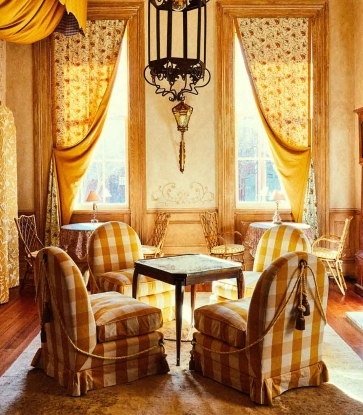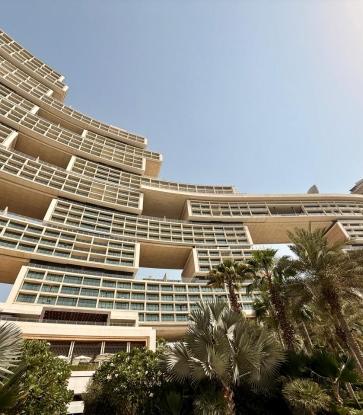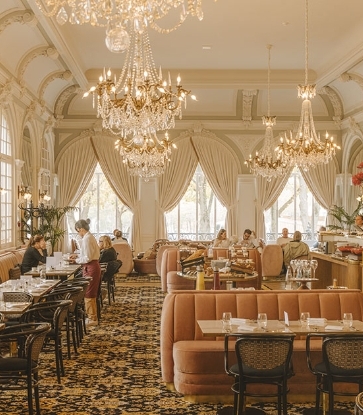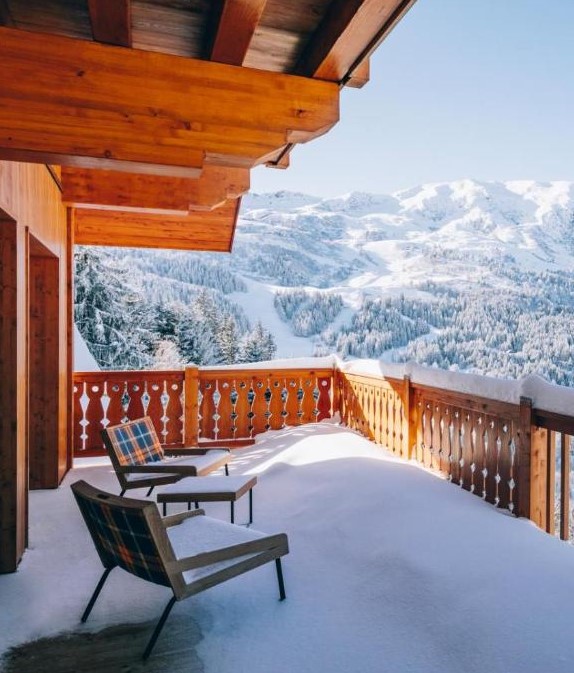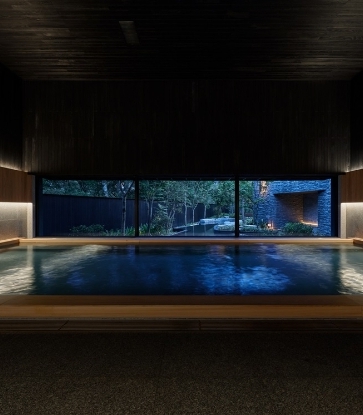Marco Reitano introduces himself to guests with a confidence that comes from his profound and rare knowledge of the wine world, yet he always manages to maintain a light and empathetic tone. His intention is to understand his guests’ desires rather than teach them about wine, with the aim of guiding their wine choices in a way that encourages curiosity, pleasure, and enjoyment.
We recently sat down with him learn more.
Fine wines at La Pergola
You have been head sommelier at La Pergola, a Three Michelin Star restaurant, for three decades. From your privileged position, how have you seen guests’ tastes change between the 1990s and the present day?
Taste is a very personal thing and must be respected as such. In my work as a sommelier, I pay particular attention to the preferences of the individual guest. I believe that a wine recommendation only works when it is “complete,” i.e. when it includes a representation of all the wines that the market has to offer. Whites, reds, sweet wines, sparkling wines, as well as classic, modern and so-called natural wines should all be included. It’s my responsibility to offer the best in terms of quality for each of the different types of wine mentioned.
Having said that, looking back at the past 30 years I am able to identify the main developments that have led to present tastes in wine. My choices, and those of most of my guests, seem to be moving toward more balanced wines that are easy to drink, even when they are ambitious in nature, and that are more in tune with a modern diet in terms of calories and general structure. Producers “listen” to trends and often lighten their wines in order to enhance the sensation of fruit and try to emphasize certain characteristics, such as freshness and flavor, that will stimulate the palate and offer the perfect accompaniment to the gastronomic experience.
What type of wine is most popular with guests at La Pergola?
With their passion for wine and their high expectations, our guests are continually in search of excellence and, thankfully, have an open attitude toward new wines and experimentation. With this in mind, it’s interesting to note that there is a growing trend among certain guests to entrust their wine choices to the sommelier. I can assure you that this hasn’t always been the case and it’s a source of pride, especially considering the fact that very few sommeliers in restaurants now have this as their exclusive role. I think that wines most loved by guests at La Pergola are probably those that manage to “surprise” them, and I feel the weight of that responsibility keenly.
On the other hand, some of our guests know exactly what they want to drink and have no need for my recommendations. They often order old Barolo or Bordeaux vintages, rare whites such as Montrachet Grand Cru, or the first vintages of Sassicaia marketed by Tenuta San Guido. And this is always thrilling for me.
What is the rarest wine that you have ever opened in the restaurant?
In this respect, I certainly consider myself very fortunate – and I’m not normally someone who makes that sort of statement! At La Pergola, I’ve had the honor of uncorking some of the world’s best wines, with great respect for those who produced them. I remember with real emotion the 1900 Château Lafite Rothschild, the 1893 Château d'Yquem, the 1947 Barolo Borgogno, and the 1955 Biondi Santi Brunello di Montalcino Riserva. If I had to narrow the field, however, I would say that the unique (and unrepeatable) experience that left an indelible mark on my emotions and tastebuds was a 1917 Romanée-Conti Monopole.
In recent years, it seems that food-and-wine pairing has become more important than the intrinsic quality of a particular wine. In your case, this involves the pleasure of enhancing recipes created by chef Heinz Beck.
Chef Heinz Beck has always encouraged collaboration between us. He constantly lets me taste his new recipes, while I offer him samples of our most interesting wines. Over thirty years of continuous experimentation, I think we can say that we have developed our own method of working. We like to enhance the dishes so that the ingredients take center stage. We don’t like to overwhelm the extreme elegance of certain rare wines with food.
We take care of our guests, ensuring that our pairings do not overwhelm their digestive balance. And we obviously do this without imposing our opinions, while fully respecting guests’ tastes and their personal choices. The restaurant experience for guests should never be reduced to a boring, didactic exercise but should instead be full of pleasurable and positive emotions.
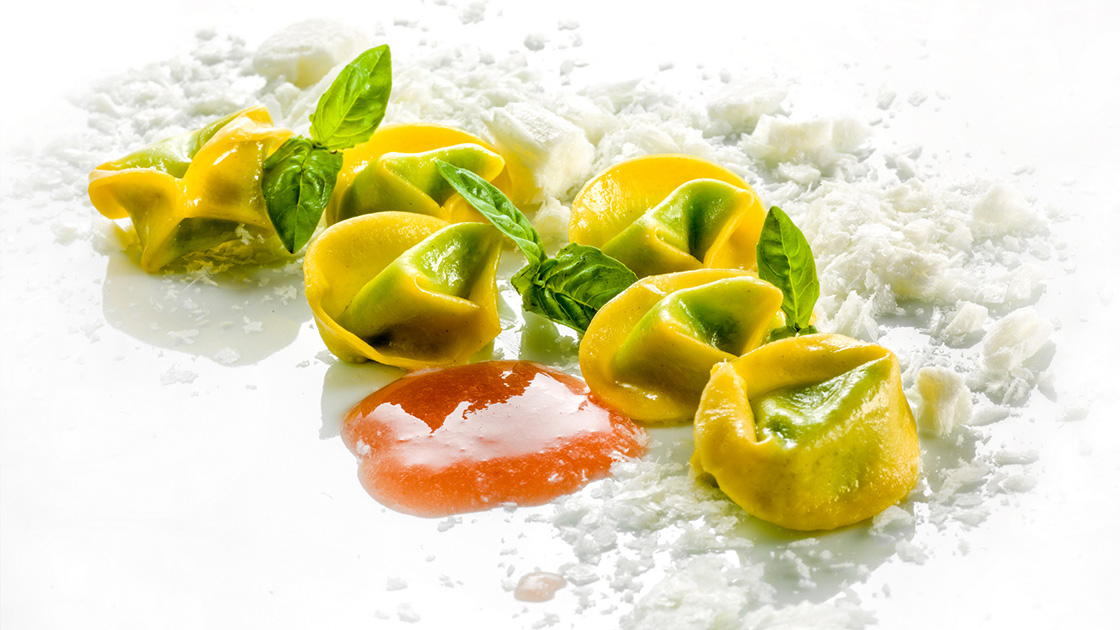
Food and wine pairing
Given the latest trend for eating and drinking what is local, what excellent wines are available in the region of Lazio?
Things are really moving in Lazio at the moment, with a new generation of producers showcasing native grape varieties that lend themselves well to traditional and natural production methods. Skin maceration, spontaneous fermentation, and vinification in cement are all methods that are increasingly used to extract the mineral flavors of our volcanic, Mediterranean terroir. Varieties making a comeback include Bombino for white grapes and Malvasia and Cesanese for red, all of which produce more contemporary, easy-drinking wines that are increasingly popular with young people and wine enthusiasts alike.
So, let’s play around a bit and assess, dish by dish, which wines from Lazio would offer the best pairing for some of the most famous dishes of Roman cuisine?
Spaghetti alla carbonara: Ribelà Bianco, Cantine Ribelà. A blend of Malvasia, Trebbiano, and Bombino from the Castelli Romani region. Straightforward, fresh, and mineral in flavor. A very good pairing for carbonara.
Bucatini all'amatriciana: Alea Viva, Andrea Occhipinti. A dry version of an Aleatico grape from the Gradoli (Viterbo region), produced from macerated grapes and spontaneous fermentation. It is matured in steel and cement and so retains much of its juice and freshness. It should be served at a temperature of 15°C, and perfectly balances the fatty aromas of the amatriciana sauce.
Oxtail stew: Cabernet Franc Habemus, San Giovenale. A powerful, spicy red from the village of Blera, near Viterbo. Dense, fruity, and structured, it is the perfect accompaniment for the complex oxtail sauce.
Abbacchio a scottadito (grilled lamb): Cesanese del Piglio Mozzatta, La Visciola. A local, full-bodied yet fruity wine with elegant tannins. Served at wine cellar temperature, it is an absolute joy with the hot, freshly grilled lamb.
Saltimbocca alla romana (veal cutlets): Fieno di Ponza Rosso, Antiche Cantine Migliaccio. An island red from beautiful Ponza. Its gentle tannins, balanced body, and marine and Mediterranean maquis aromas pervade and enhance the succulent veal cutlets.
Ricotta and sour cherry tart: Aleatico Passito Cristino, La Piana. For this combination, I suggest a boat trip down the coast of Lazio to Capraia island in Tuscany. The sweet, mineral flavors and sublime fruitiness of this wine make it highly drinkable, so that you can enjoy every last crumb of our ricotta and sour cherry tart.
In your free time
Away from work, what wine do you choose to drink?
When I’m working, the days can be very long and demanding. We finish very late and are often exhausted. On Sundays, I allow myself a bit of down time. I love the countryside and the warmth of a lunch with the family. At these lunches, we nearly always have the same wine – a delicious Montepulciano made by the farmer who owns the land next to mine, just north of Rome. It’s a comforting yet simple wine that is drunk with pleasure.
However, I don’t always manage to get up early enough for a trip out of Rome. When that happens, I just have a relaxing Sunday until evening comes, when I’ll go out to enjoy a good bottle of Barolo or Chambolle-Musigny. I like to drink these wines young, when they are powerful yet at the same time smooth in structure.
And to finish our chat, where would you say are the most interesting places in Rome to enjoy a good glass of wine?
The most reliable places are those that have contributed to the history of fine wines in Rome, particularly Il Goccetto in Via dei Banchi Vecchi, Roscioli in Via dei Giubbonari, and Al Vino Al Vino in Via dei Serpenti.









